
Vught is a municipality and a town in the southern Netherlands, and lies just south of the industrial and administrative centre of 's-Hertogenbosch. Many commuters live in the municipality, and the town of Vught was once named "Best place to live" by the Dutch magazine Elsevier.

Sluis is a town and municipality located in the west of Zeelandic Flanders, in the south-western Dutch province of Zeeland.

Zeelandic Flanders is the southernmost region of the province of Zeeland in the south-western Netherlands. It lies south of the Western Scheldt that separates the region from the remainder of Zeeland and the Netherlands to the north. Zeelandic Flanders is bordered to the south and to the east by Belgium.

Anton Adriaan Mussert was a Dutch politician who co-founded the National Socialist Movement in the Netherlands (NSB) in 1931 and served as its leader until the party was banned in 1945. As such, he was the most prominent Dutch fascist before and during World War II. Mussert collaborated with the German occupation government, but was granted little actual power and held the nominal title of Leider van het Nederlandsche Volk from 1942 onwards. In May 1945, as the war came to an end in Europe, Mussert was captured and arrested by Allied forces. He was charged and convicted of treason, and was executed in 1946.
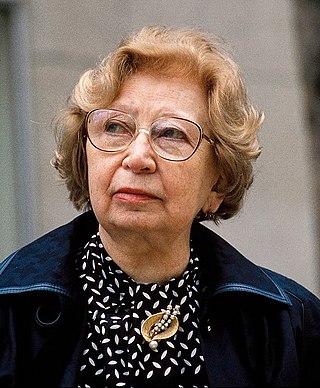
Hermine "Miep" Gies was one of the Dutch citizens who hid Anne Frank, her family and four other Dutch Jews from the Nazis in an annex above Otto Frank's business premises during World War II. She was Austrian by birth, but in 1920, at the age of eleven, she was taken in as a foster child by a Dutch family in Leiden to whom she became very attached. Although she was initially only to stay for six months, this stay was extended to one year because of frail health, after which Gies chose to remain with them, living the rest of her life in the Netherlands.

Despite Dutch neutrality, Nazi Germany invaded the Netherlands on 10 May 1940 as part of Fall Gelb. On 15 May 1940, one day after the bombing of Rotterdam, the Dutch forces surrendered. The Dutch government and the royal family relocated to London. Princess Juliana and her children sought refuge in Ottawa, Canada until after the war.
During World War II, resistance movement occurred in German-occupied Europe by a variety of means, ranging from non-cooperation to propaganda, hiding crashed pilots and even to outright warfare and the recapturing of towns. In many countries, resistance movements were sometimes also referred to as The Underground. The resistance movements in World War II can be broken down into two primary politically polarized camps: the internationalist and usually Communist Party-led anti-fascist resistance that existed in nearly every country in the world; and the various nationalist groups in German- or Soviet-occupied countries, such as the Republic of Poland, that opposed both Nazi Germany and the Communists.
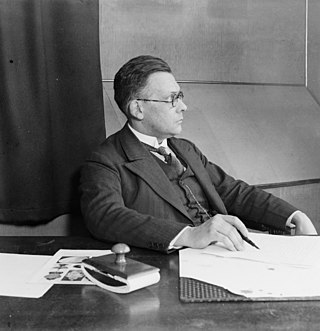
Jan Pieter Marie Laurens de Vries was a Dutch philologist, linguist, religious studies scholar, folklorist, educator, writer, editor and public official who specialized in Germanic studies.

Jan Joseph Godfried, Baron van Voorst tot Voorst Jr. was the second highest officer in command of the Dutch armed forces during World War II and a renowned strategist, who wrote numerous articles and books on modern warfare.

The Dutch resistance to the German occupation of the Netherlands during World War II can be mainly characterized as non-violent. The primary organizers were the Communist Party, churches, and independent groups. Over 300,000 people were hidden from German authorities in the autumn of 1944 by 60,000 to 200,000 illegal landlords and caretakers. These activities were tolerated knowingly by some one million people, including a few individuals among German occupiers and military.
In the decades since the Holocaust, some national governments, international bodies and world leaders have been criticized for their failure to take appropriate action to save the millions of European Jews, Roma, and other victims of the Holocaust. Critics say that such intervention, particularly by the Allied governments, might have saved substantial numbers of people and could have been accomplished without the diversion of significant resources from the war effort.
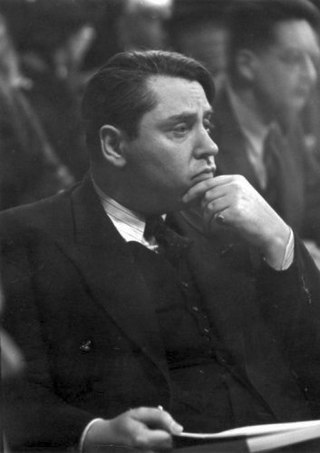
Jacques Goudstikker was a Jewish Dutch art dealer who fled the Netherlands when it was invaded by Nazi Germany during World War II, leaving three furnished properties and an extensive and significant art collection including over 1200 paintings, many of which had been previously catalogued as "Old Masters". The entire collection, which had been surveyed by Hermann Goering himself, was subsequently looted by the Nazis. Between the two World Wars, Jacques Goudstikker had been the most important Dutch dealer of Old Master paintings, according to Peter C. Sutton, executive director and CEO of the Bruce Museum of Arts and Science. Despite efforts of Goudstikker's widow after the war to regain possession of the collection, it was not until after her death that the Dutch government finally restituted 202 paintings to the Goudstikker family in 2006. To finance efforts to reclaim more of the stolen art, a large portion of them were sold at auction in 2007 for almost $10 million.

Coenraad Alfred Augustus Haighton was a millionaire businessman and the leader of the Netherlands' first fascist movement.
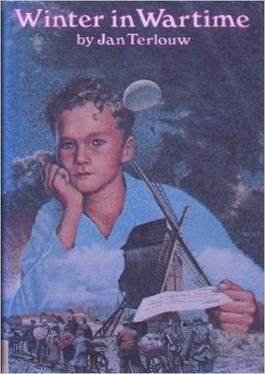
Winter in Wartime is a novel by the Dutch writer Jan Terlouw. The story is about a 15-year-old Dutch boy who lives through the last winter of World War II and is based on the author's recollections; Terlouw was eight when the German army invaded the Netherlands.

Roelant Roghman was a Dutch Golden Age painter, sketcher and engraver.

Nieuw Vosseveld is a prison in Vught, Netherlands, part of the Custodial Institutions Agency of the Ministry of Justice and Security within the Dutch criminal justice system. Penitentiaire Inrichting Vught is now the general term used instead of Nieuw Vosseveld. Part of Nieuw Vosseveld is a maximum security prison; it holds some of Europe's most dangerous criminals, including Mohammed Bouyeri and Ridouan Taghi.
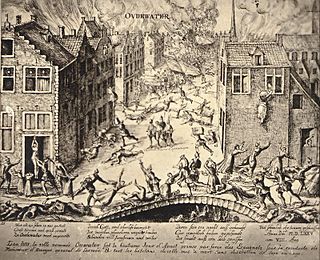
The siege of Oudewater was an event during the Eighty Years' War that took place in the Dutch town of Oudewater, culminating in the Oudewater Massacre. The siege by Spanish troops started on 19 July 1575 and ended on 7 August 1575, when the town was taken by storm and plundered.

The Holocaust in the Netherlands was organized by Nazi Germany in occupied Netherlands as part of the Holocaust across Europe during the Second World War. In 1939, there were some 140,000 Jews living in the Netherlands, among them some 24,000 to 25,000 German-Jewish refugees who had fled from Germany in the 1930s. Some 75% of the Dutch-Jewish population was murdered in the Holocaust. The 1947 census reported 14,346 Jews, or 10% of the pre-war population. This further decrease is attributed to massive emigration of Jews to the then British Mandate of Palestine.
Eekhout is a Dutch surname. Notable people with the surname include:

The Sack of Lier, also known as the Fury of Lier in the Southern Netherlands, took place on 14 October 1595 when a force of the Dutch States Army led by Charles de Heraugières, governor of Breda, took the town by surprise during the Eighty Years' War. Heraugières, who was known for his daring surprise attacks over Breda in 1590 and Huy in March 1595, had been instructed to capture Lier ahead a small elite force while the bulk of the Spanish Army of Flanders was deployed in northern France and the Lower Rhine. The possession of Lier would have provided the Dutch Republic an advanced base deep inside the Brabant, which would allowed the States troops to cut the communications between Antwerp, Mechelen, Leuven and 's-Hertogenbosch, and to raid as far as Brussels.

















